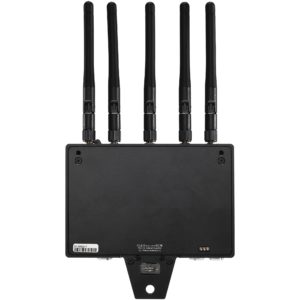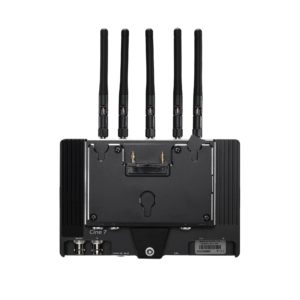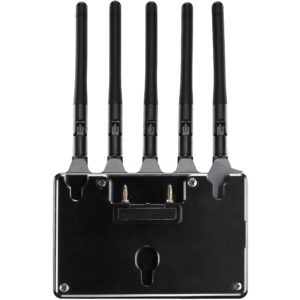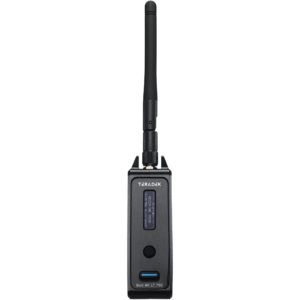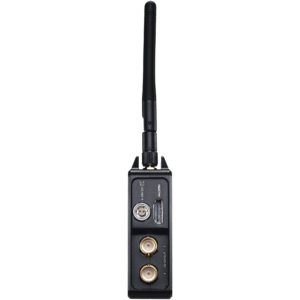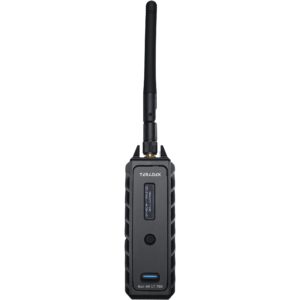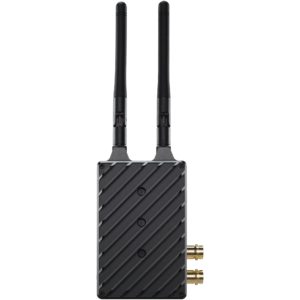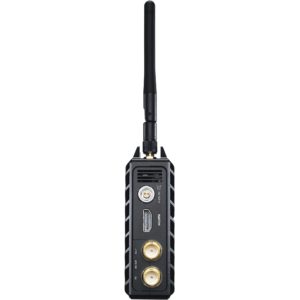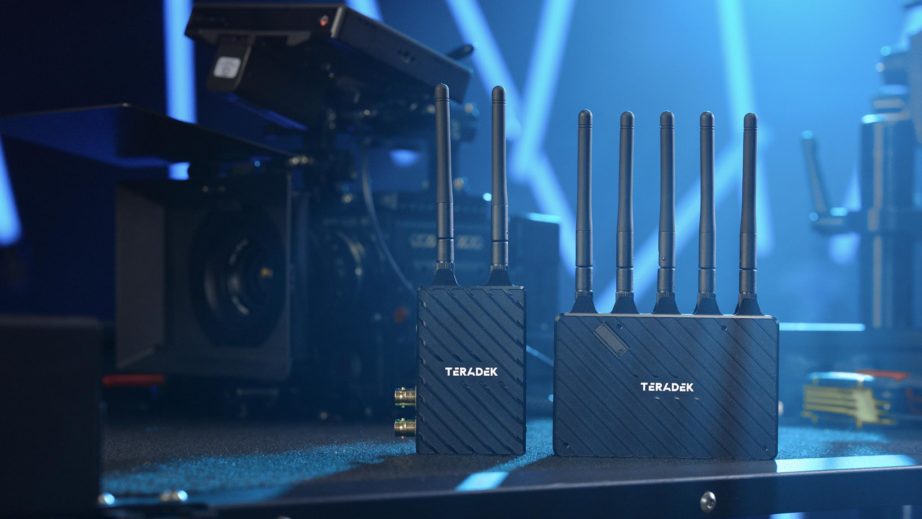
L to R: Bolt 4K LT Transmitter (TX), 4K LT Receiver (RX)
I have been singing the praises of 4K and HDR wireless video on set and location. But there was a concurrent chorus of users who wanted a more affordable alternative.
Now Teradek adds their new Bolt 4K LT Transmitter and Receiver to their Bolt 4K line-up.
“Bolt 4K LT represents the culmination of a massive effort at Teradek,” said Nicol Verheem, Creative Solutions CEO. “We’ve added considerable technology upgrades without raising the price to the end-user.”
What’s this? Same price as previous Bolt 2K models? Why would I want to upgrade? And at half the price of the current Bolt 4K systems, what’s missing?
Yes, Bolt 4K LT is the same price as earlier 2K models.
You want to upgrade because the image quality and signal range is greatly improved compared to your older 2K Bolts. But you don’t have to ditch them. For example, you can use them for B camera or second unit.
Bolt 4K LT uses the same 4K chipset as the more expensive 4K models. To simplify things, allow me to nickname those existing, more expensive models “4K ST.” So, like Arricams: Bolt 4K LT and 4K ST. Of course, let’s not forget Bolt 4K MAX with up to 5,000 foot range.
As far as I can dissect, the only things missing in the 4K LT is 12G-SDI 4K. You get HDMI 4K and 3G-SDI / HDMI 1080p video connections on the LT. Also, 4K ST achieves DCI 4K.
Things get even more interesting with the new Bolt 4K RX Monitor Module. It is actually another version of the 4K LT Receiver that is designed to attach directly to SmallHD 7-inch monitors (Cine 7, Indie 7 and 702 Touch). This turns it into an all-in-one monitor / receiver unit.
Greg Smokler, Creative Solutions VP of Product, explained, “Combined with our new 4K Production Monitors from SmallHD, we believe the 4K LT wireless line offers an affordable on-ramp to the world of 4K and HDR on-set monitoring. The ability to freely mix and match transmitters, receivers and monitor modules across any Bolt 4K model really opens up possibilities for users at all levels of production.”
The Bolt 4K RX (Receiver) Module can be connected directly to SmallHD Cine 7, 702 and Indie 7 monitors with a few screws. It includes a specially designed HDMI connector that doesn’t rely on a cable—it’s a machined piece that fits securely. The big benefit is that it retains the 4K information since it is HDMI 2.0. This will allow users to do a 1:1 pixel zoom of the 4K on the HD SmallHD 7″ monitors.
As Teradek says in a headline: Featherlight body weight with heavyweight strength. Zero delay. Entirely HDR. Total cross-compatibility with all Bolt 4K and Bolt 4K MAX devices.
A Teradek spokesperson added, “Another thing we really want to highlight is the compatibility and ecosystem that the 4K + HDR monitoring world now has with the powers of Bolt 4K systems and SmallHD 4K Monitors combined.”
All Bolt 4K Series transmitters and receivers are interoperable. Models and ranges can be mixed-and-matched, so all Transmitter / Receiver combinations can be linked and share image signal up to their respective model distances. A single Transmitter can connect with up to 6 Receivers (LT, ST) for on-set viewing by many people: DP, Director, AC, Script Supervisor, Sound Mixer, AD, etc.
Bolt 4K LT prices are as follows:
- Bolt 4K LT 750: $2,490
- Bolt 4K LT 1500: $4,990
- Bolt 4K RX Monitor Module: $1,490
- Cine 7 Bolt 4K RX (Monitor+ Module Bundle): $2,990
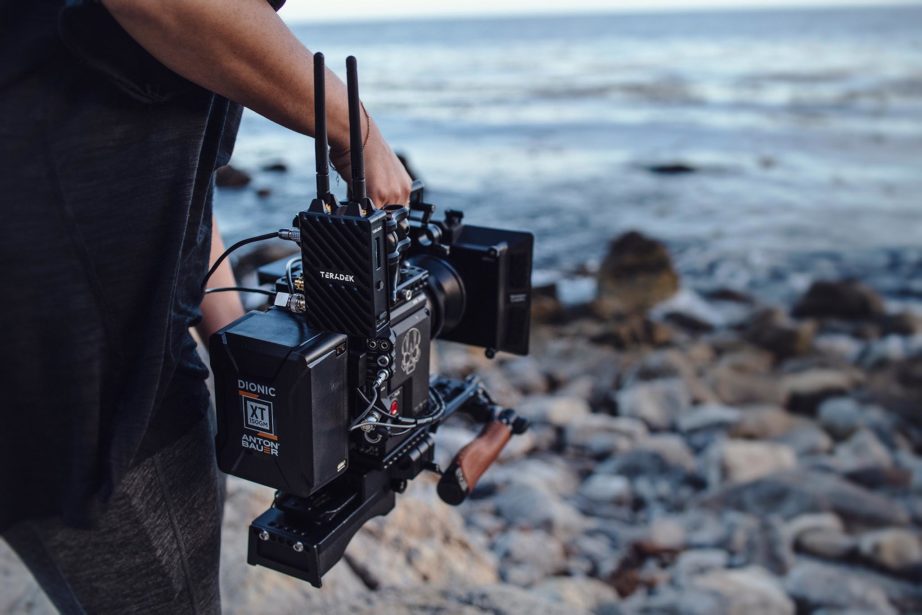
Bolt 4K LT Transmitter (TX) attached to camera
Teradek Bolt 4K LT Specifications
- Bolt 4K LT 750: 750 ft range
- Bolt 4K LT 1500: 1500 ft range
- Zero-Delay Wireless Video (<0.001 sec)
- Up to 6 Receivers can be use with 1 transmitter
- Fully Cross-Compatible with all Bolt 4K Series (LT, ST, MAX)
- HDR 10-bit 4:2:2 Color Gamut
- HDMI 2.0 up to 4Kp30
- 3G-SDI up to 1080p60
- 13x 40 MHz Frequencies
- Transmit Metadata, Timecode, and Record Flags
- Smartphone Management with Bolt 4K Manager App
- Increased image clarity with 50% boost in signal range
- Faster reconnection times
- Improved image quality at longer distances compared to 2K Bolt.
- Bolt 4K LT Monitor Module Receiver
- Bolt 4K LT Monitor Module attached to Cine 7 Monitor
- Bolt 4K LT Receiver (RX)
- Bolt 4K LT Transmitter (TX)
(This is a “reprint” from November 2020 FDTimes issue 105.)

